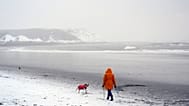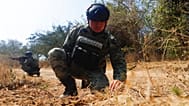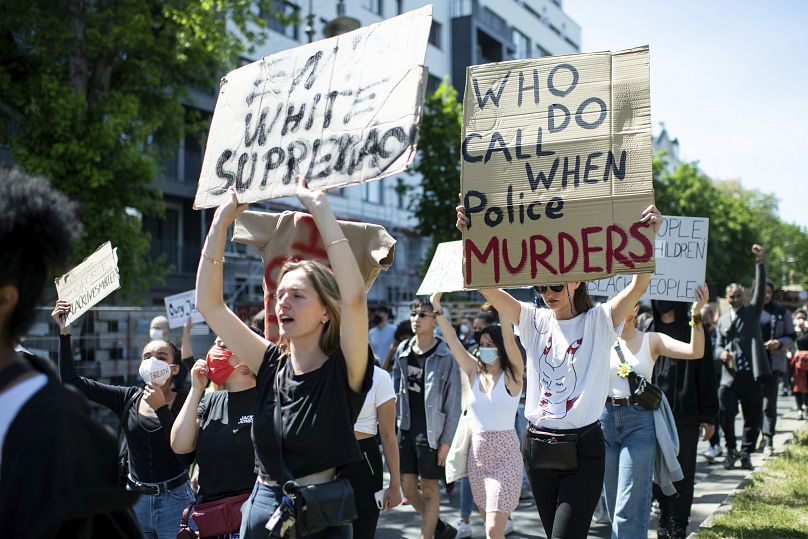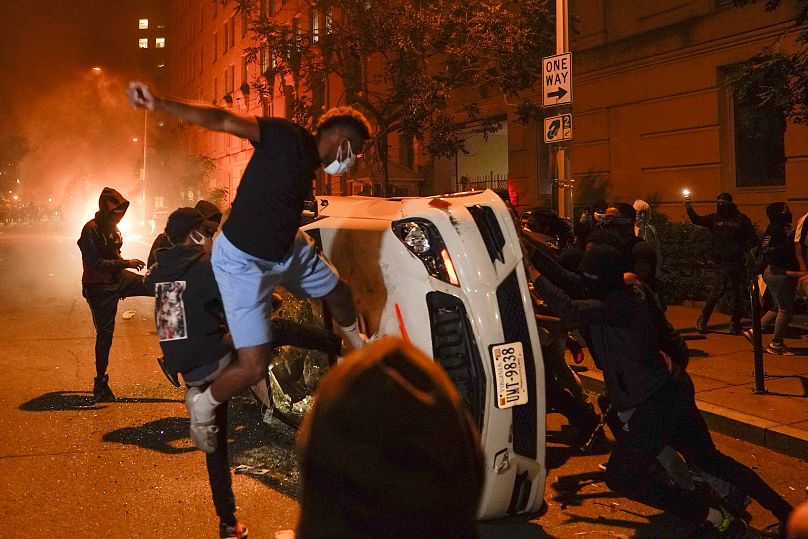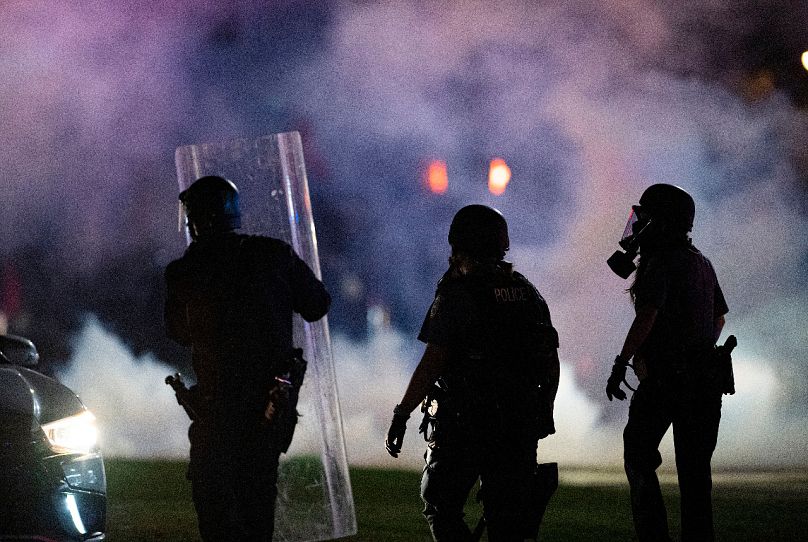Violent clashes have spread over the weekend as protesters defied city curfews, amid widespread anger at the latest police killing of a black American.
An autopsy commissioned for George Floyd’s family found that he died of asphyxiation due to neck and back compression, the family’s attorneys said Monday.
Floyd, a 46-year-old black American, died after a Minneapolis police officer held his knee on Floyd's neck for several minutes and ignored his cries of distress.
The new autopsy results found the compression cut off blood to Floyd’s brain, and that the weight on his back made it hard to breathe, attorney Ben Crump said, according to the Associated Press.
Video of the May 25 incident has sparked violent protests in the US, which have been described as the worst unrest in decades.
The autopsy results revealed on Monday differed from an official autopsy that cited underlying health issues and intoxicants in Floyd's system.
One police officer, Derek Chauvin, who had his knee on Floyd's neck in videos, has been charged with third-degree murder and manslaughter. Chauvin and three other officers were fired.
The family's attorney called for the third-degree murder charge against Chauvin to be upgraded to first-degree murder and for three other officers to be charged.
Protests spread to multiple cities around the world
Demonstrations against racism have spread to multiple cities around the world including London, Berlin, Montreal and Auckland following Floyd's death.
Thousands joined a protest in London on Sunday and a silent vigil was held in front of the US embassy next to Brandenburg Gate on Monday.
US citizens present criticised Donald Trump's reaction to the killing as well as systemic racism in the country.
Read more: US police violence: A few bad apples or systemic racism?
Protests turn violent in multiple US cities
Protests were particularly chaotic in US cities where demonstrators have ignored curfews and calls to stay away -- including in Minneapolis, the city where Floyd died.
Protests spread to major cities from New York to Los Angeles -- but also to smaller cities such as Eugene, Oregon and Richmond, Virginia.
New York imposed a curfew on Monday from 11:00 pm to 5:00 am EST to prevent outbreaks of violence related to protests.
US President Trump and Attorney General William Barr reportedly called for an aggressive response in a phone call with nation's governors on Monday, according to multiple US media reports.
Police had used tear gas and rubber bullets against protesters in several US cities on Sunday, and protesters had hurled rocks and Molotov cocktails at police in Philadelphia. Seven police officers in Boston were hospitalised.
Police officers and National Guard soldiers in Kentucky killed a man early Monday. Police said they were returning fire after someone in a group shot them first.
Meanwhile, a number of fires were set near the White House as protests escalated in Washington DC on Sunday night. The New York Times reported that President Trump had been rushed to an underground bunker in the White House, used in the past during terror attacks.
Several state governors called in the country's National Guard to try to quell the uprising, with clashes continuing over the weekend. More than 4,000 people have been arrested during the protests since the day George Floyd was killed, according to an AP tally.
There have been numerous reports of police brutality against unarmed protesters and journalists covering the protests. Two police officers were fired and three others placed on desk duty over the use of excessive force during one incident, Atlanta's mayor said on Sunday.
Police and protesters clashed in city centres, police vehicles were set on fire, and property and businesses damaged amid widespread rioting and looting.
The violence comes amid the coronavirus pandemic and resulting widespread economic damage, raising concerns of further infections.
President Trump acknowledged the "horror, anger and grief" felt by many over Floyd's death, denouncing "looters and anarchists" for the violence. He blamed the Democrat mayor of Minneapolis for failing to control the protests.

